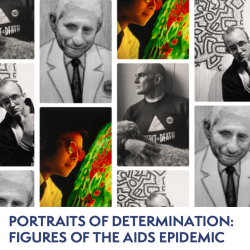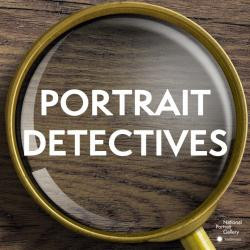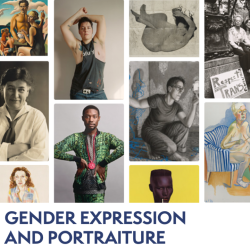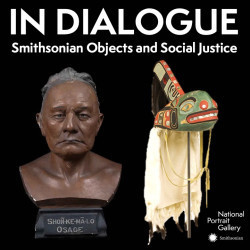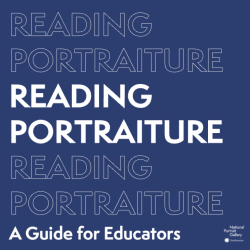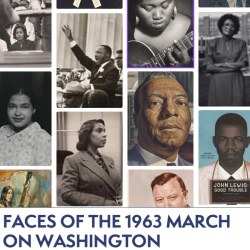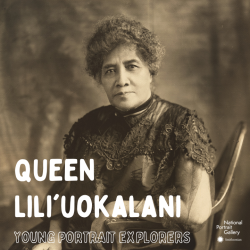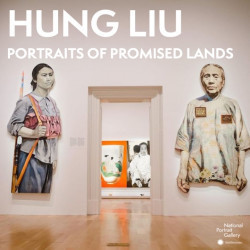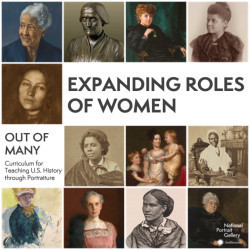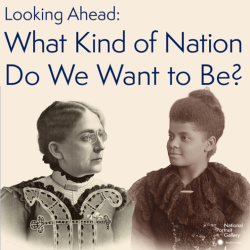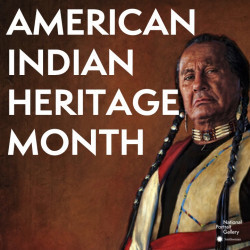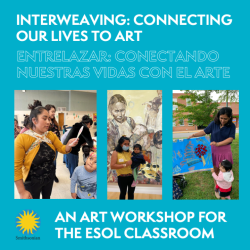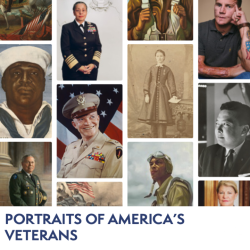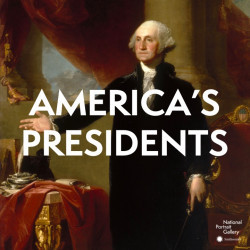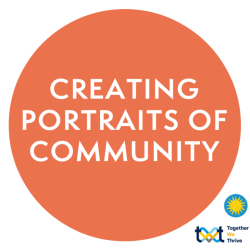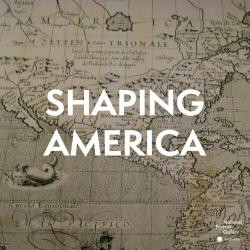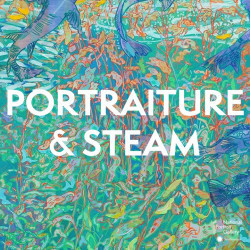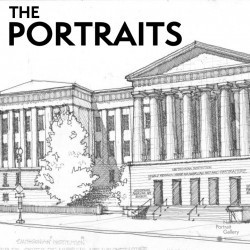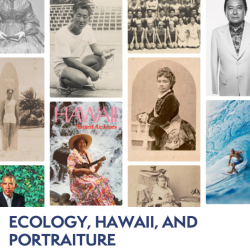Nicole Vance Nash's collections
Portraits of Determination: Figures of the AIDS Epidemic
<p>2025 marks the 40th anniversary of the opening of gay rights and HIV/AIDS activist Larry Kramer’s play, <em>The Normal Heart</em>. This collection takes a close look at portraits of Kramer and other significant figures during the AIDS epidemic of the 1980’s and considers how portraits can be used to share this history.</p>
<p><em>“Portraits of Determination: Figures of the AIDS Epidemic” is part of the teacher workshop series Classroom Conversations which uses portraits to explore topics and themes related to history and heritage months throughout the school year.</em> </p>
 Nicole Vance Nash
Nicole Vance Nash
31
Portrait Detectives
<p>This Learning Lab complements the National Portrait Gallery's student program, Portrait Detectives.</p>
<p>Students will be transformed into Portrait Detectives, searching portraits for and analyzing clues to learn more about significant Americans. Through interactive discussions and sketching and writing activities, students will read, compare, and contrast portraits across the collection. This module is divided into the following themes to best support your curriculum and student interests: Presidents, Activists, Icons, and Scientists.</p>
<p><strong>Objectives:</strong></p>
<p><strong></strong>After completing this lesson, students will be better able to: </p>
<ul>
<li>Identify important Americans and analyze their contributions to U.S. History <br>
</li>
<li>Identify key components of a portrait and discuss what we can learn about the sitter through these components.</li></ul>
<p><a href="https://npg.si.edu/teachers/school-groups">Schedule</a> a virtual Portrait Detectives program with National Portrait Gallery educators.</p>
<p>#NPGteach</p>
<p><br></p>
 Nicole Vance Nash
Nicole Vance Nash
93
Mirrors and Windows: Empathy and Portraiture
<p>Explore how portraits can be both mirrors and windows- mirrors to see ourselves and windows into the humanity of others. Use this collection to think about connections between yourself, those around you, and sitters within the National Portrait Gallery collection.</p>
<p><i>"Mirrors and Windows: Empathy and Portraiture</i>”<em> is part of the teacher workshop series “Classroom Conversations” which uses portraits to explore topics and themes related to history and heritage months throughout the school year.</em> </p>
 Nicole Vance Nash
Nicole Vance Nash
36
Reading Portraiture: A Guide for Educators
<p>The National Portrait Gallery tells the story of the United States by portraying the people who shape the nation’s history, development, and culture. These individuals understand who we are and remind us of what we can aspire to be.</p>
<p>In this guide, you will discover how to teach students to spot visual clues in portraits and then analyze them, similar to dissecting a historical document. Teaching students to use close reading skills with portraiture will produce a rich and memorable investigation of both the sitter and the artist. Use the close looking strategies in this collection as a springboard for classroom conversations. Portraits present insights into history and biography, prompt writing in the classroom, inspire students to create self-portraits, and even offer great ties to science and mathematics.<br></p>
<p>The Learning to Look strategies in this guide offer unique ways to engage in close looking and portraiture with your students. The Elements of Portrayal provide more guiding questions to help you and your students learn how to read portraiture.</p>
<p>#NPGteach</p>
<p>#SummerSessions<br></p>
 Nicole Vance Nash
Nicole Vance Nash
85
Portraits of Change: Faces of the 1963 March on Washington
<p>This collection takes a close look at significant figures from the 1963 March on Washington for Jobs and Freedom. Consider how portraits can add depth to students’ understanding of this important event and honor the people who made it happen.</p>
<p><em>“Portraits of Change: Faces of the 1963 March on Washington” is part of the teacher workshop series Classroom Conversations which uses portraits to explore topics and themes related to history and heritage months throughout the school year.</em> </p>
 Nicole Vance Nash
Nicole Vance Nash
45
Queen Lili'uokalani: Young Portrait Explorers
<p>Learn about Queen Lili'uokalani and decorate sheet music of "Aloha Oe" with Hawaiian flowers. </p>
<p>This lesson was created by National Portrait Gallery educators Beth Evans and Irina Rubenstein.</p>
<p>#NPGteach</p>
 Nicole Vance Nash
Nicole Vance Nash
26
Teaching with Primary Sources and Portraiture
<p>How do we teach a balanced, comprehensive, and complex history of the United States? In this collection, explore themes of civil rights, labor history, environmentalism, Native history, and more. Through document analysis and reading portraiture strategies, uncover previously unknown stories and consider the pressures and motivations that shaped historical controversies.<br></p>
<p>This Learning Lab collection has been created in conjunction with the July 2024 Teaching with Primary Sources and Portraiture professional development workshop, co-hosted by the National Portrait Gallery and the National Archives and Records Administration. <strong></strong><strong></strong></p>
<p>#NPGteach</p>
 Nicole Vance Nash
Nicole Vance Nash
89
American Indian Heritage Month with the National Portrait Gallery
<p>Meet the Native Americans who shaped the history, development, and culture of the United States of America. Use this collection to celebrate American Indian Heritage Month and embrace indigenous voices in the classroom year round. Native peoples have lived throughout what is now the United States since time immemorial and continue to make homes and communities here today. This collection mirrors parts rather than the whole of this continuing story. It also reflects the history of portraiture in the United States- we recognize that who is represented and how one is represented reflects the country's flaws as well as it's strengths<br></p>
<p>#NPGteach</p>
<p><strong>Keywords: </strong>Portraits, American Indian Heritage Month, American Indian, Native American, Indigenous, Ani-Yunwiya (Cherokee), Diné (Navajo), Chata (Choctaw), Sioux, Wah-Zha-Zhi (Osage), Ojibwe (Chippewa), Apache, Niitsitapi (Blackfeeet), Haudenosaunee (Iroquois), Nuuchu (Ute), Nuwuvi (Paiute), Seminole, Muscogee (Creek), Quapaw, Portraits</p>
 Nicole Vance Nash
Nicole Vance Nash
184
Interweaving: Connecting Our Lives to Art - Entrelazar: Conectando nuestras vidas con el arte
<p> In this collection, ESOL (English for Speakers of Other Languages) students will understand the value of their observations, the impact of their voices, and the power of sharing their unique stories. Using the National Portrait Gallery’s exhibition <a href="https://npg.si.edu/exhibition/hung-liu-portraits-promised-lands">Hung Liu: Portraits of Promised Lands </a>(2021-2022) as a case study, students will develop a sense of confidence and belonging that transmits to their families and communities. </p>
<p>This collection is based of a spring 2022 workshop that was part of a long-standing partnership with between Fairfax County Public Schools Family Literacy ESOL Program, the National Portrait Gallery, and the Smithsonian Office of Educational Technology. </p>
<p>Educators of the workshop include: Beth Evans (NPG), Micheline Lavalle (FCPS), and Philippa Rappoport (OET).</p>
<p>Please note: the Spanish elements in this collection reflect the first language spoken by most participants in the spring 2022 Family Literacy workshop.</p>
<p> </p>
<p>#FamilyLit #FamilyLiteracy #FCPSFamilyLiteracy</p>
 Nicole Vance Nash
Nicole Vance Nash
44
Black History Month with the National Portrait Gallery
<p>Meet the Black Americans who shaped the history, development, and culture of the United States of America from 1700-present. Use this collection to celebrate Black History Month and embrace Black voices in your classroom year-round! </p>
<p>This collection mirrors parts rather than the whole of African American history and culture. It also reflects the history of portraiture in the United States, we recognize that who is represented and how one is represented reflects the country's flaws as well as it's strengths<br></p>
<p>#NPGteach</p>
 Nicole Vance Nash
Nicole Vance Nash
241
Creating Portraits of Community
<p>In this lesson pack, students will learn how to research and document their communities through photographs and oral histories. Students will gain a deeper understanding of the social, cultural, political, and historical contexts of their own communities and develop important research, communication, and critical thinking skills. The goals of the project include: <br></p>
<ul>
<li>Students will build visual literacy, critical thinking, analyzation, interview, and discussion skills by working with primary sources. </li>
<li>Students will use new skills to make connections with other students and their community, by creating portraits of their community through oral history, photography, and video. </li>
<li>Students will be able to define what community is to them and have a greater awareness of their local community. </li>
</ul>
<p>Creating Portraits of Community, A Together We Thrive Initiative, was created by educators from the National Portrait Gallery (NPG), National Museum of American History (NMAH), Smithsonian American Art Museum (SAAM), and SI Affiliates. Project authors include: Elizabeth Dale-Deines, Orlando Serrano, Eden Cho, Briana Zavadil White, Jocelyn Kho, and Abbie Hitzemann. </p>
<p><br></p>
 Nicole Vance Nash
Nicole Vance Nash
113
Shaping America: Exploring Portraiture from the Colonial Era to the Civil War
<p>This Learning Lab complements the National Portrait Gallery's student program, Shaping America.</p>
<p>Meet the politicians, reformers, inventors, authors, soldiers, and others who shaped the course of American history from the Colonial Era through the Civil War. Students will analyze portraits to learn about the diverse and significant contributions to American society made by individuals in the National Portrait Gallery’s collection.</p>
<p>#NPGteach<br></p>
<p><strong>Objectives:</strong> After completing this lesson, students will be better able to:</p>
<ul><li> Identify important Americans and analyze their contributions to U.S. History</li><li>Identify key components of a portrait and discuss what we can learn about the sitter through these components</li></ul>
<p><strong>Keywords: </strong>Colonies, Revolutionary War, Westward Expansion, Civil War, Abolition, Suffrage</p>
 Nicole Vance Nash
Nicole Vance Nash
72

